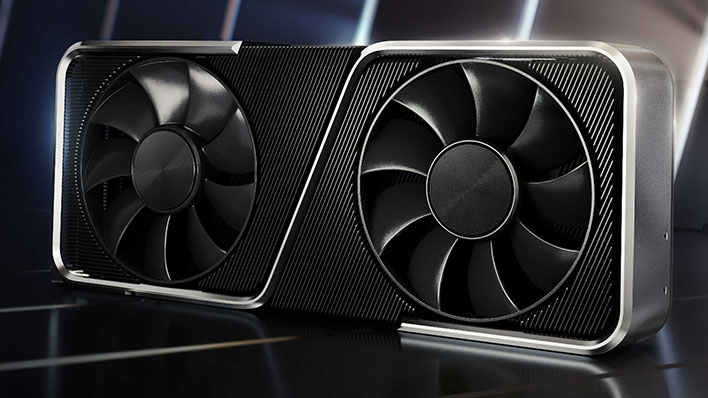A Gimped GeForce RTX 3050 Desktop Card With A Mobile GPU May Be In The Pipeline

What exactly makes a graphics card a GeForce RTX 3050? Simply put, it's the name on the box. From there, NVIDIA can dictate what specs constitute the model name, and those specs can be revised over time (a concept that's not unique to NVIDIA, by the way). We bring this up because NVIDIA is reportedly preparing some changes to the GeForce RTX 3050.
Before we get to that, let's recap the RTX 3050. When the card launched in January 2022, it debuted with a GA106 GPU featuring 2,560 CUDA cores, 80 Tensor cores, 20 RTX cores, and 8GB of GDDR6 memory (14Gbps) tied to a 128-bit bus for 224GB/s of memory bandwidth. Reference specs also called for a 1,552MHz base clock and 1,777MHz boost clock.
Then in December of 2022, the RTX 3050 got a mid-life kicker with a GA107 GPU, which kept the core specs the same but allowed NVIDIA to massage a lower TDP at 115W (versus 130W).
Now there's increased chatter of another refresh (chatter that we first heard in October), but with some key revisions to the overall spec sheet. Citing information that was posted to the Board Channels forum in China, which we don't have access to, the folks at Videocardz say NVIDIA has alerted its add-in board (AIC) of "significant adjustments to the RTX 3050 series products."
Apparently NVIDIA is planning to discontinue the current iteration of the GeForce RTX 3050 with 8GB of GDDR6 memory and replace it with a version that wields 6GB of VRAM. It's also suggested that the bus width could change in either direction, to 96-bit or 192-bit.
There's another interesting wrinkle to the story, though. It's reported by ITHome that NVIDIA will swap out the GPU for the same one found in the mobile GeForce RTX 3050, the GA107. This would mean a 20% reduction in CUDA cores to 2,048, and it's further stated that it will feature a 1,470MHz core clock, which is 17% lower than the 8GB model that's available now.
On the plus side, the gimped release (if it comes to pass) likely would draw all the necessary power from the motherboard's PCI Express slot rather than requiring a PSU cable being plugged in. It should also come with a price reduction, though we'll have to wait and see.


